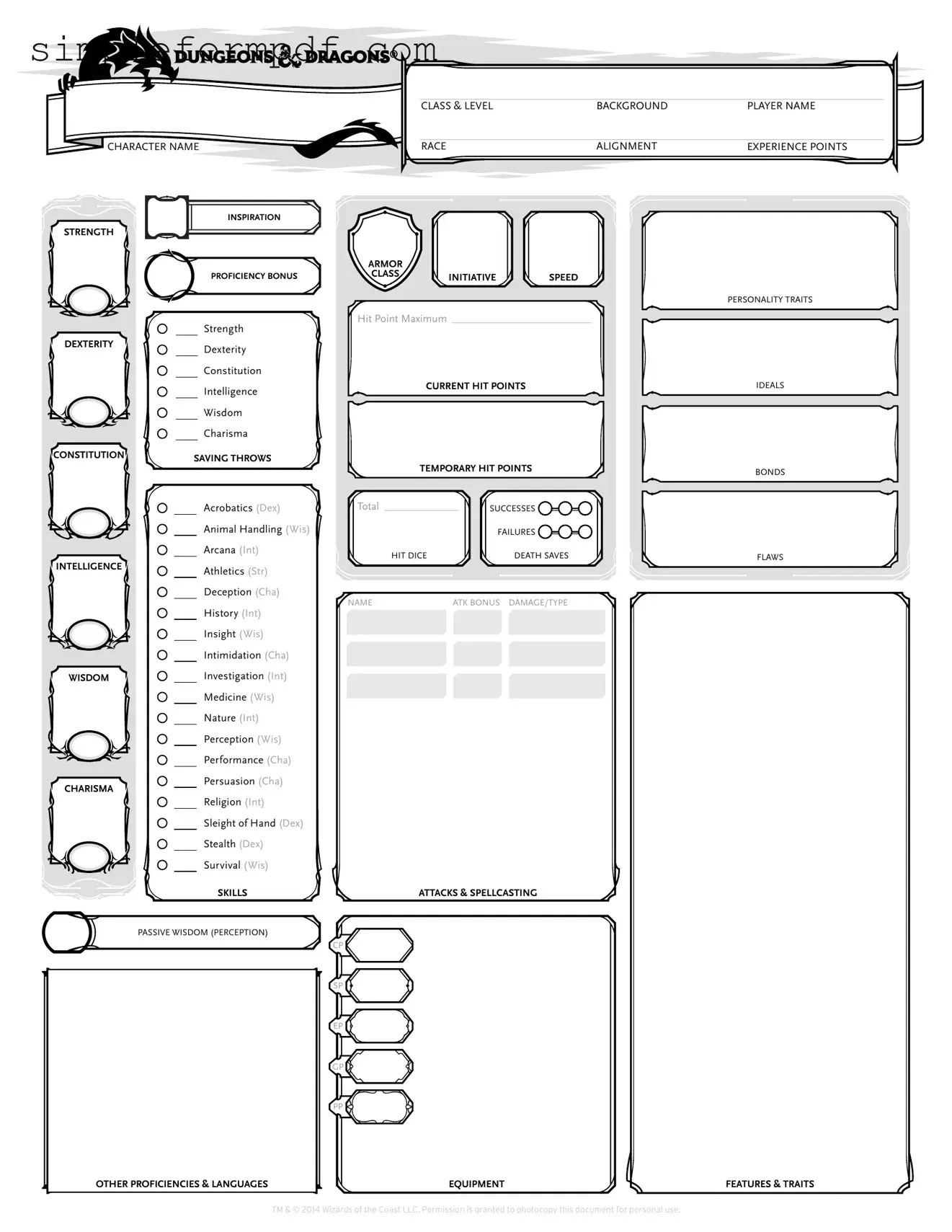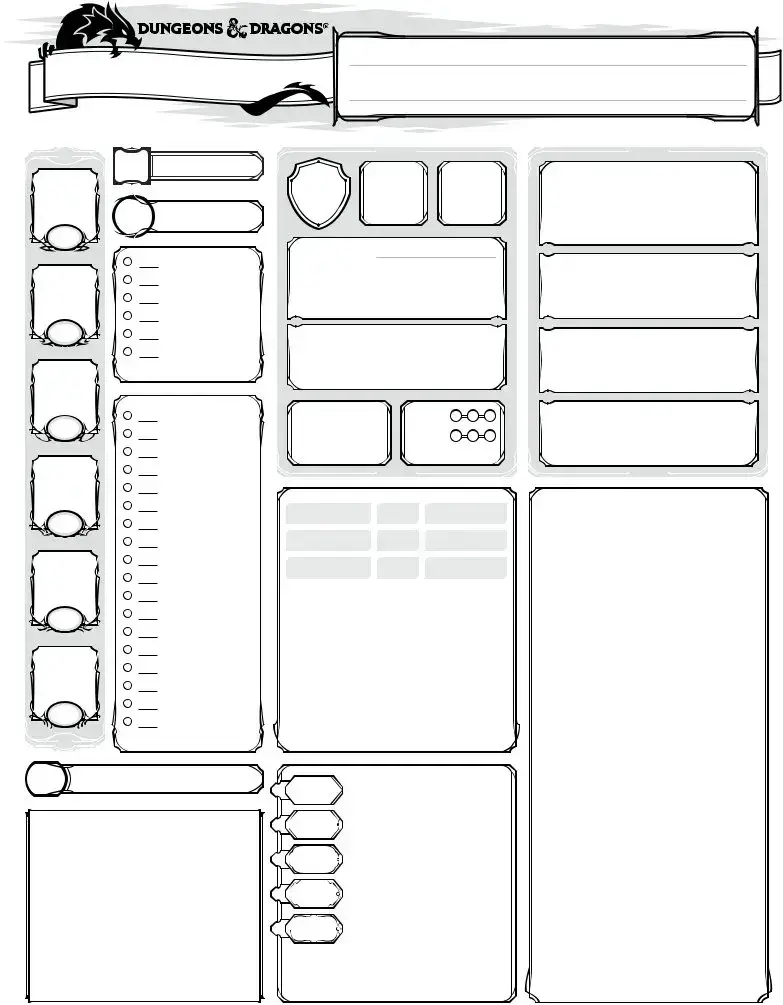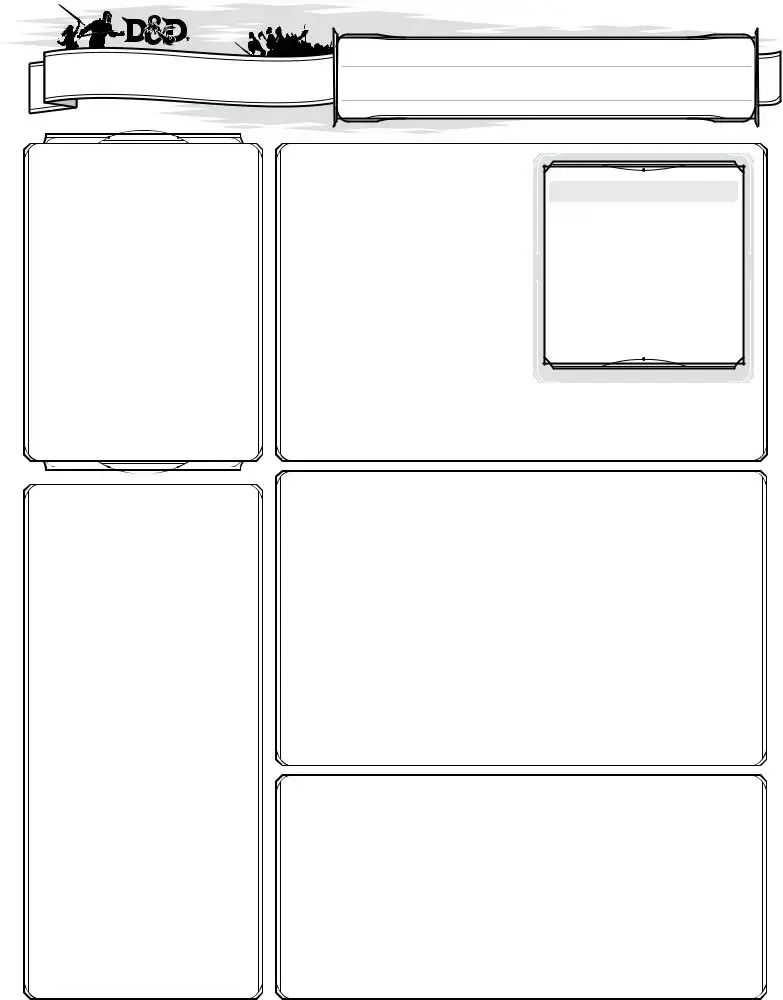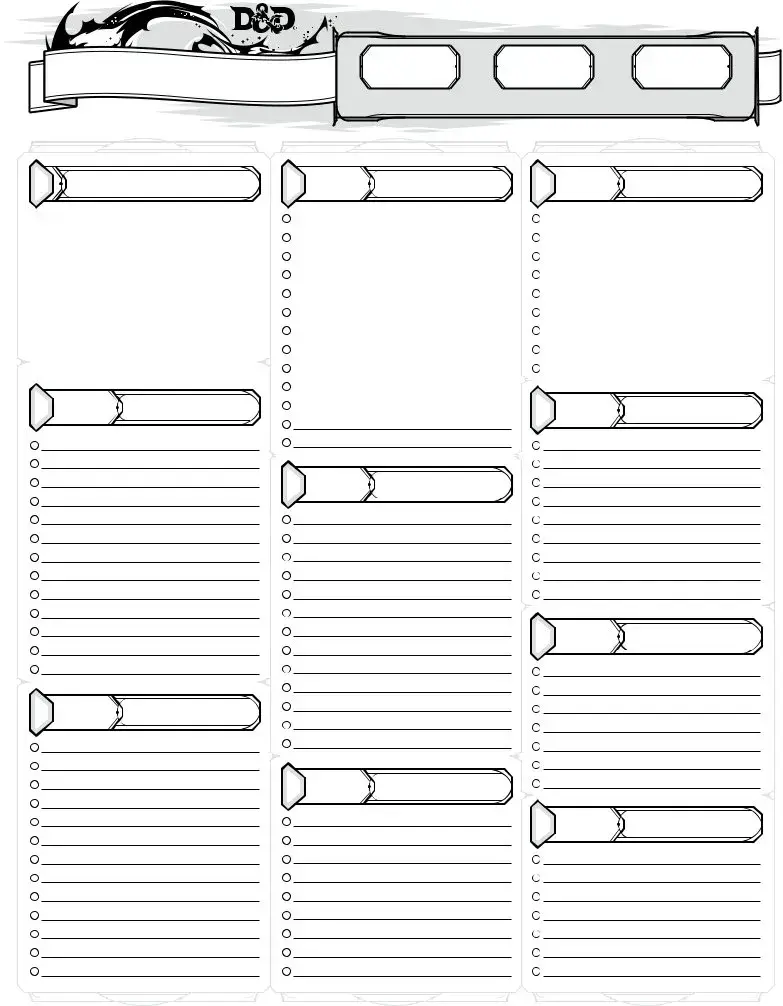Dnd Character Sheet PDF Form
The Dungeons & Dragons Character Sheet is a crucial tool for players, serving as a detailed record of a character's abilities, skills, and background. This form helps players keep track of their character's journey and growth throughout the game. Ready to create your own character? Fill out the form by clicking the button below!
Launch Editor













